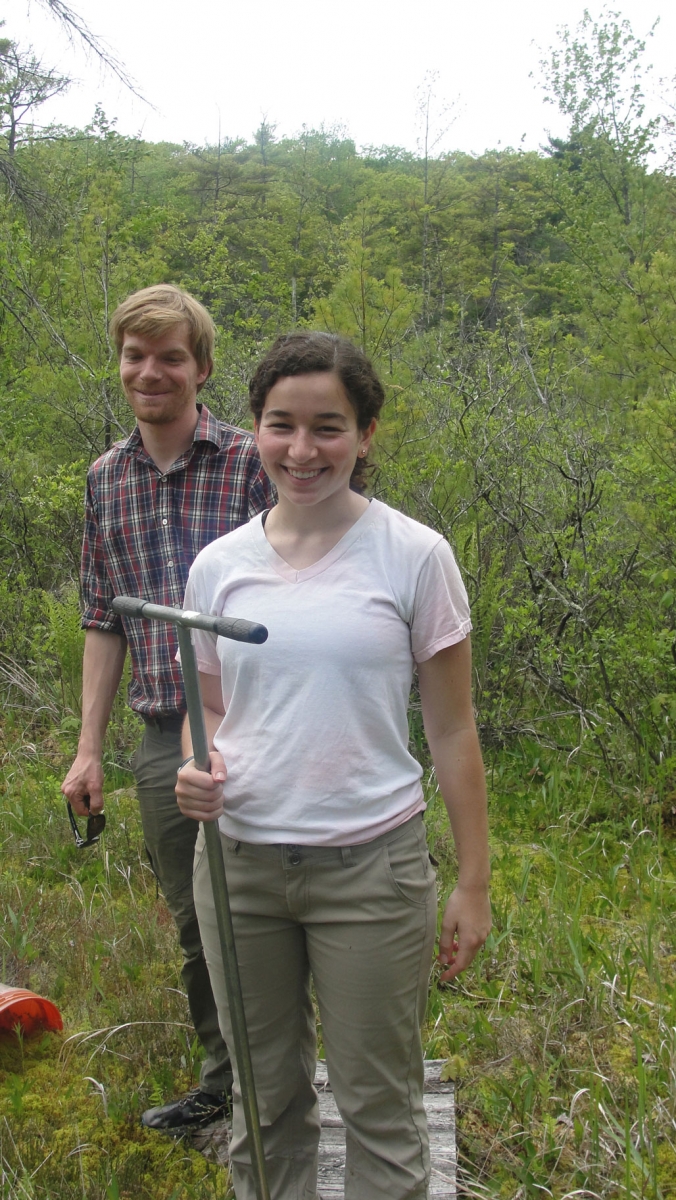You are here
Change is Underfoot
With all the talk of climate change and increased CO2 emissions wreaking havoc on the globe’s ecosystems, you might think that all the carbon we’re emitting is going straight into the atmosphere, condemning us to a sticky, sweaty future. But, in fact, the global climate has a secret, and it’s beneath your feet. Global soils contain more carbon than what is stored in the atmosphere and plants, and they play an important role in the amount of carbon being released into the atmosphere. With warming and precipitation expected to increase in many parts of the world, soils’ response to these new set of conditions have important implications for the global carbon cycle.
Soils are home to much of the decomposition that occurs in the biosphere. Microbes in the soil process organic matter into nutrients, including carbon. Some of that carbon is used by plants for growth, but much of it is emitted as CO2. How much carbon is emitted by soils is thus dependent on the rate of decomposition. If decomposition rates increase, the amount of CO2 emitted by soils would also increase, and would increase the total amount of CO2 being released into the atmosphere.
My project focuses on factors that might affect decomposition rates--moisture, warming, and manganese content. Manganese (Mn) is a common trace metal in temperate soils, and greater amounts of Mn have been shown to also reflect higher rates of decomposition. This summer, I’m looking at how manganese contents change across a moisture gradient here at Harvard Forest. I’ll be using a series of different lab and field techniques to determine Mn content. I’ll also be using soil samples from a long-term warming project running here at Harvard Forest to look at how warming affects Mn concentrations.
A Day in the Life: On my average workday, I’ll head down to Shaler Hall with my fellow Summer Program students for breakfast before heading to the lab or the field. Early in the project, I’ve been working closely with my mentor, Marco Keiluweit, a professor at UMass-Amherst, to develop my research proposal. Once we have a research plan, we head out into the field to collect our samples.
Our field site is right on the edge of Beaver Swamp, in the Prospect Hill area of Harvard Forest. Our sites range from underwater to several meters up the bank on the ridgeline. Since we want to examine decomposition and Mn content across a moisture gradient, it’s important to have a representative sampling plan. We start with taking three samples at the ridgeline, then work down to around 3 meters away from the water. Our last ‘dry’ sampling site is right next to the water. ‘Dry” is a loose term; at this site, the water table is only inches below the leaf litter layer.
For each sample, we separate the soil cores into 4 layers: leaf litter, organic matter, mineral layer, and parent material. I’m starting to be able to tell the difference between each layer. Between the organic matter and the mineral layer is usually a thin gray band, evidence of the changing compositions of organic material and nutrients. Later, I’ll take the samples back to the lab at UMass-Amherst to dry the soils and run several different chemical extractions to determine manganese content in each layer of soil. For now, I’m content identifying soils in the warm New England sunshine.



